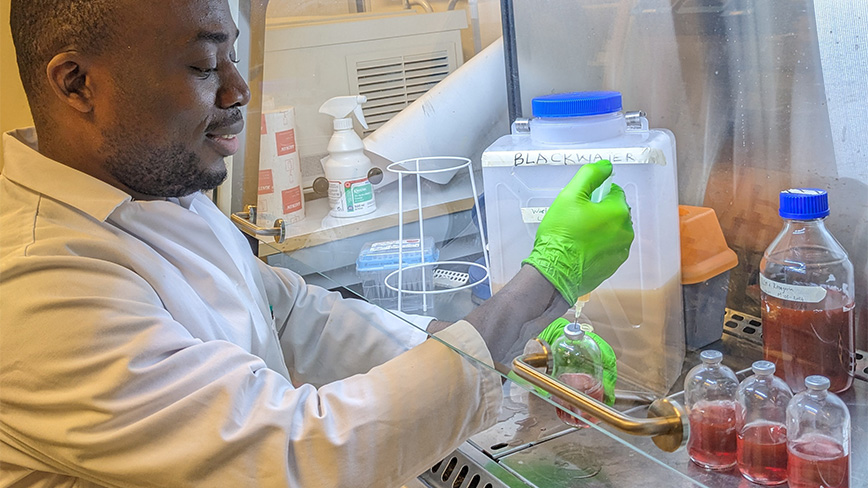Biochemicals from wastewater – a gamechanger

Researchers at KTH aim to produce chemicals from wastewater as an alternative to fossil-based chemicals. The researchers in the project named NEEDED, which is funded by Åforsk, will design a group of microorganisms with the capacity to efficiently transform organic matter in wastewater into products with future applicability in industry.
“Considering the United Nation Sustainable Development Goals, cities like Stockholm are aiming to become circular cities by incorporating the concept of biorefinery in new residential areas. This concept refers to the transformation of waste into value-added products with further applications,” says Associate Professor Zeynep Cetecioglu Gurol .

A biorefinery can be defined as a framework or a structure in which biomass is used in an optimal manner to produce new products or energy. In the NEEDED project, the researchers intend to use an upflow anaerobic sludge blanket (UASB) reactor, one of the most well-established bioreactor systems for biogas production from wastewater.
“Using this high-speed process as basis, and by specifically modifying the microbial community, we intend to use the UASB for volatile fatty acid production. Our aim is to assemble a cascade of UASBs, combining different stages of the production process, to produce different volatile fatty acids,” says researcher Isaac Owusu-Agyeman, PhD.
Could be a game changer
According to the researchers, the produced volatile fatty acids could be used for bioplastics and biodiesel production, or as a raw material for the chemical industry. Additionally, these products can also be used to improve the nitrogen removal from wastewater, consequently improving the quality of the water released by the wastewater treatment plant.
“The novelty of this project is related to the use of a synthetic bacterial culture through microbial manipulation, to increase the efficiency of the volatile fatty acid production in these reactors,” says PhD candidate Maria Leonor da Quinta Lobo, and continues:
“Our main goal is to be able to add this culture to wastewater treatment plants which is quite a new strategy for volatile fatty acid production and we believe it could be a game changer in this field.”
Text: Jon Lindhe
